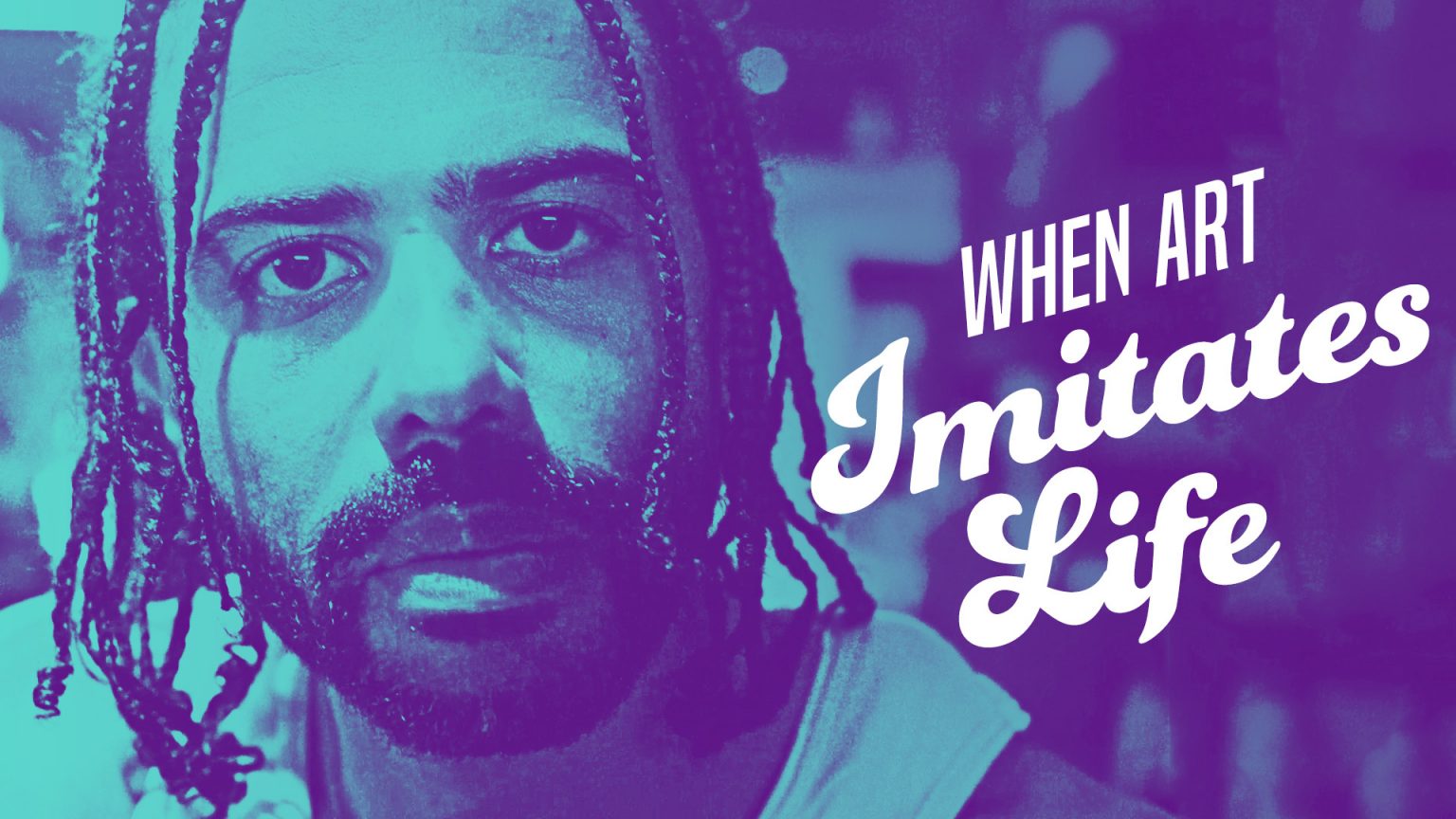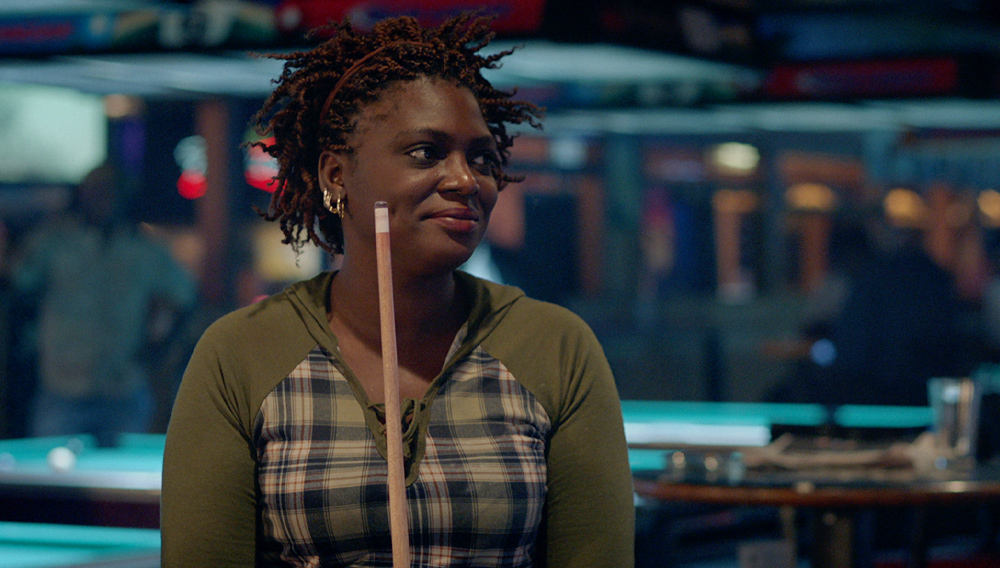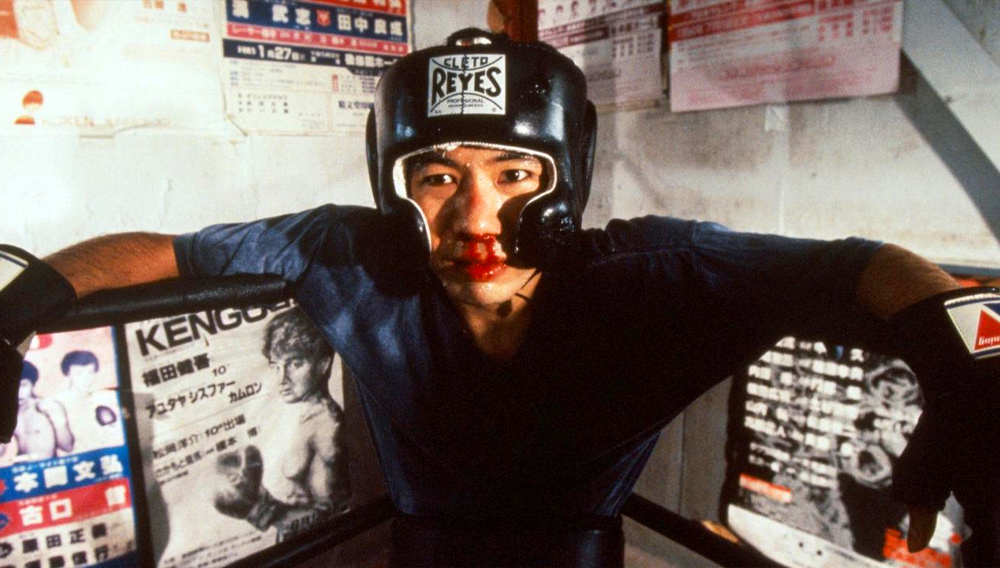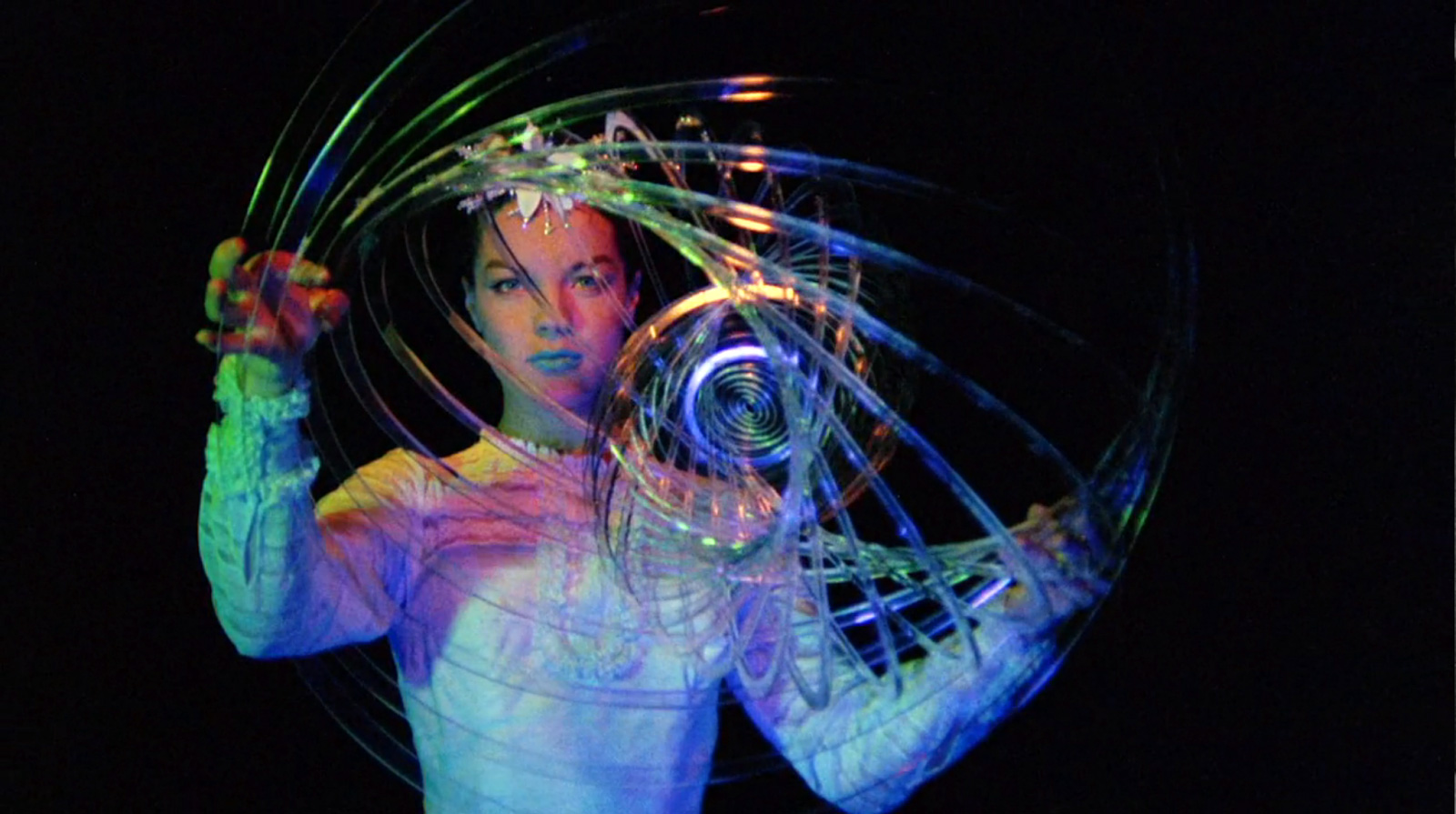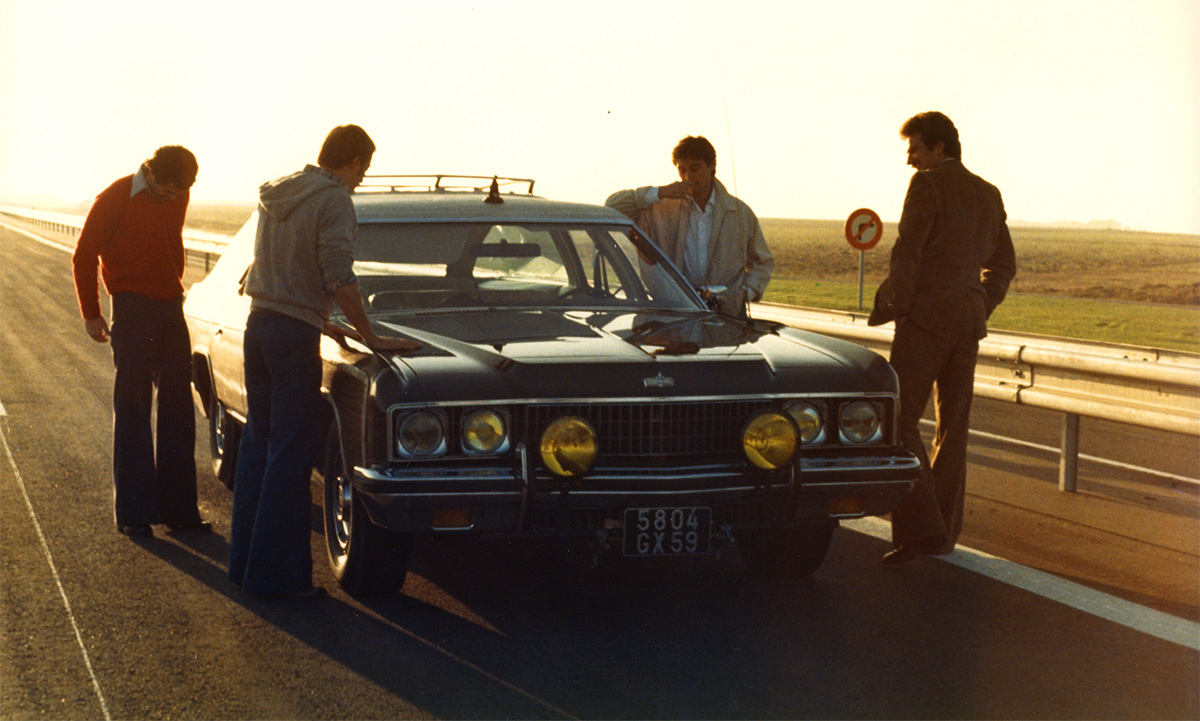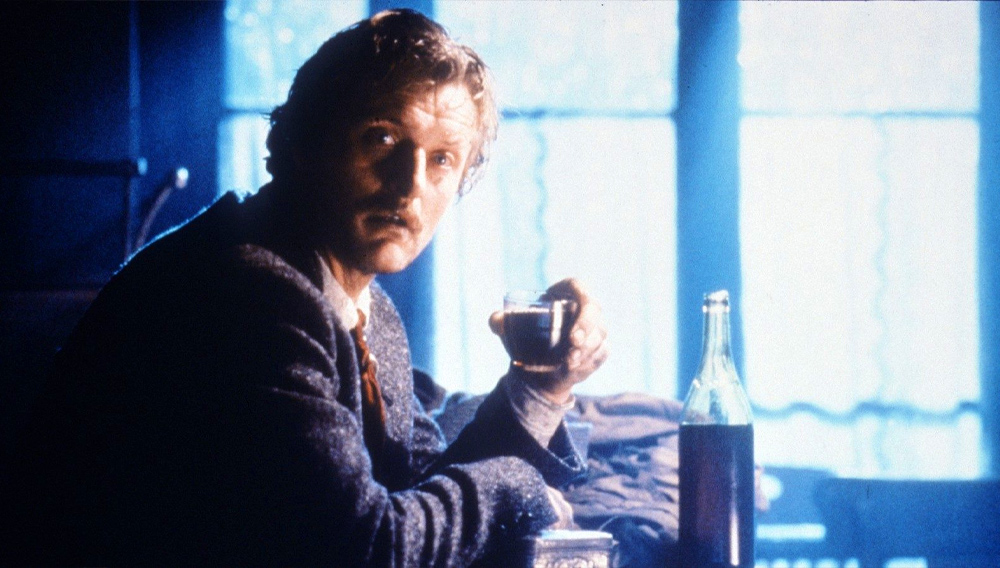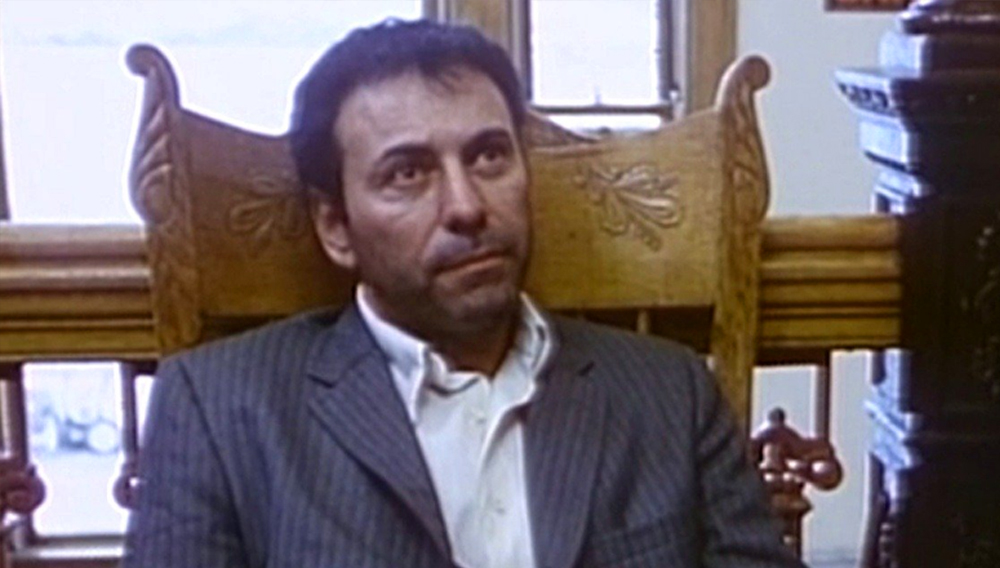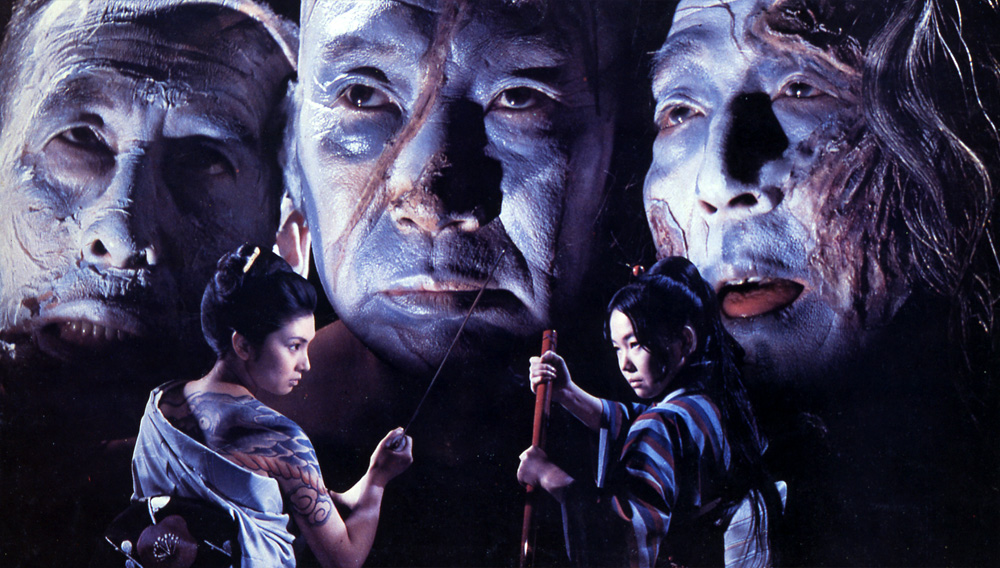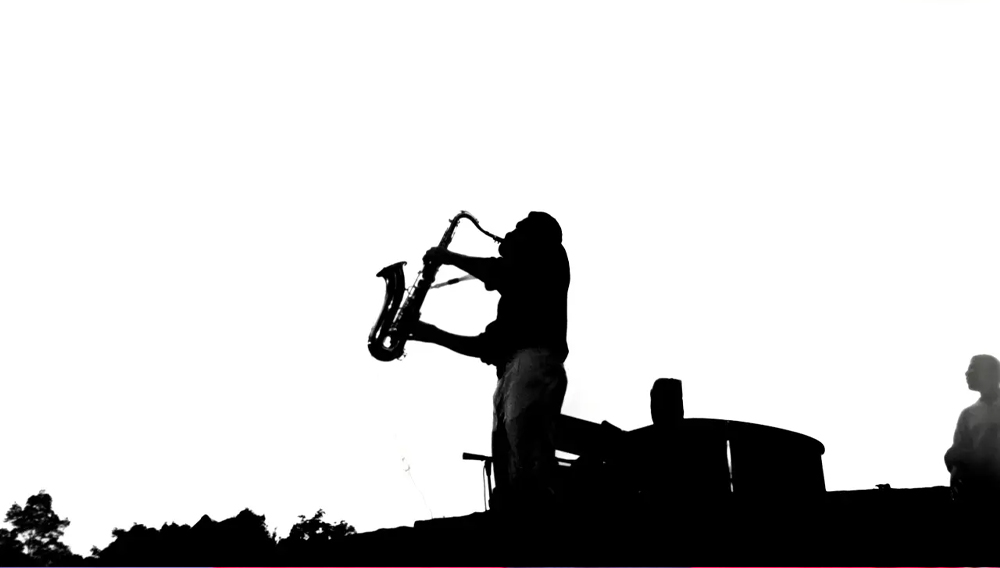Warning: This article contains some mild spoilers for “Blindspotting.”
Previously in our three-part series about Oakland on-screen, we discussed how Sorry to Bother You and Black Panther suggests that the East Bay city is entering a future that’s “up for grabs.” In the final entry in our series, we discuss how Blindspotting addresses the resulting issues of gentrification and police violence.
During Blindspotting’s opening credits sequence, the camera scans across the streets of Oakland, and immediately, before stars Daveed Diggs and Rafael Casal enter the scene, we are introduced to the stark dichotomy of the city. We see the vibrant graffiti and the cracked streets. And we see the new, ultra-modern homes that are replacing it all. In no time we understand the conflict between this old (some would say, authentic) Oakland, and the new. This conflict lives on the surface of the city but it’s not unique to Oakland—and it goes deeper than rising rents and encroaching gentrification (though those aspects are certainly a large part of the conflict). Oakland is a city in the midst of an identity crisis, a place where money, race, and culture exploded into politics, ethics, code-switching, violence, and art.
Oakland native Daveed Diggs, along with Rafael Casal, co-wrote and co-star in the film and they know this dual identity of the city as well as anyone. The feeling of ambivalence permeates farther than the shifting streets; it informs every character in the movie. No one in Daveed and Casal’s Oakland can be distilled into only one identity.
Collin (Diggs) and Miles (Casal) are caught up in the midst of the shifting city around them and the transition between the people they have been and the people they are becoming. For Collin, fresh off a recent prison sentence, the change around him is inevitable and the change within him feels welcome. Miles, on the other hand, chafes against the shifting landscape. He curses the new as well as oblivious ex-pats and scoffs when ten-dollar juice starts being sold at the local corner shop.
This polarizing characterization of the movie’s two protagonists is more than a plot device. It’s about privilege. You see, Collin is black and Miles is white. It doesn’t matter that they grew up together, or that they are from the same place, or that Miles is a “thug.” The color of his skin brings privilege with it. Collin, despite growing up in a predominantly black neighborhood with friends and family, has had to face the realities of being viewed as “the other” his entire life. For him, the gentrifying neighborhood is more of the same. But for Miles, seeing his local neighborhood whitewashed threatens his identity. When he’s mistaken for one of these new Oakland transplants and accused of code-switching, it shakes him to his core. For the first time in his life, he has to confront the realities of his skin color.
Let’s backtrack.
Yes, this movie is about Oakland and the people of Oakland, but the story orbits around a gun. We first meet Miles as he’s buying a gun from his Uber driver, while Collin sits in the back seat, desperately (albeit comically) asking to be let out of the car. This tableau succinctly, hilariously, and disturbingly frames the entire movie. Miles is almost flippant in the way he handles and purchases the weapon. Collin is all too conscious of what it would look like if a black man (and recently released felon) were caught in possession of this gun. And the gun seller-cum-Uber driver represents Oakland in transition. Throughout the rest of the movie, the audience knows that, though it isn’t always onscreen, the gun is always present.
So why is Miles so flippant about the gun? Despite identifying more with his girlfriend and Collin, he doesn’t, at this point, understand that because of his skin color he’s not a target for police like they are. Collin was put in jail for a fight that both he and Miles were a part of. Yet, Collin went to jail and Miles did not. Throughout much of the movie, Miles is either unaware or unwilling to confront why that is.
It isn’t until that moment when Miles is mistaken for one of the new Oakland ex-pats that he realizes that while he identifies and empathizes with the people close to him, how Miles and Collin are perceived by other people is not the same. When Miles shoots the gun, Collin challenges him: Even if Miles was the one with the gun, whom does he think the police will target—the white man or the black man?
What is “blind spotting?” In the movie, it’s defined by a person’s inability to change their perception—of an object, a person, or a place. But it also means the opposite; it can mean identifying the things you were once blind to. While that shift in perception, that realization of the harms of gentrification, code-switching, and the co-opting of culture might be impossible for the movie’s many new Oakland ex-pats, it isn’t for Miles and it isn’t for the Audi
Like the characters in this movie, Oakland is many different things, and it is changing. Its proximity to the wealth of Silicon Valley exacerbates and underlines that change. But as Collin and Miles show in the movie, change in and of itself is not a bad thing—it’s when people are blind to their own biases, their own prejudices, their own faults that people get hurt. Gentrification does not just raise property values; it erases culture; it pushes out people who have lived in a place their entire lives. Code-switching and cultural appropriation are inauthentic, shallow, and cutting attempts to connect, or worse, colonize. Police violence is a news story on the evening news, but it’s a reality that has always faced the people of Oakland and others around the country. These crises are part of Oakland’s story, but they are also part of our national identity. They are things we all must learn to be less blind to.

